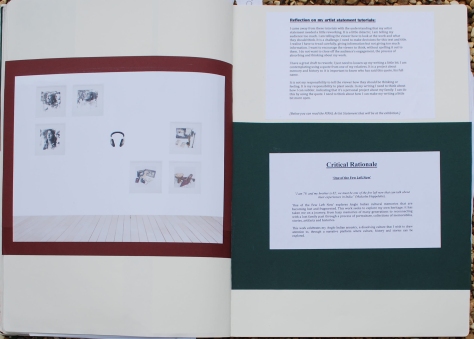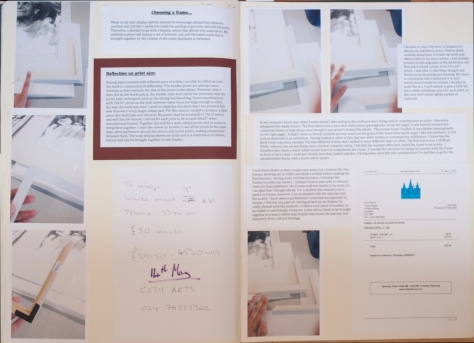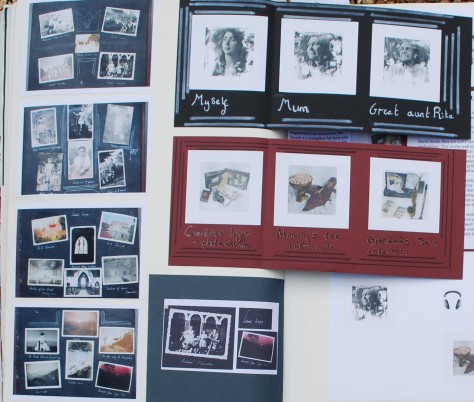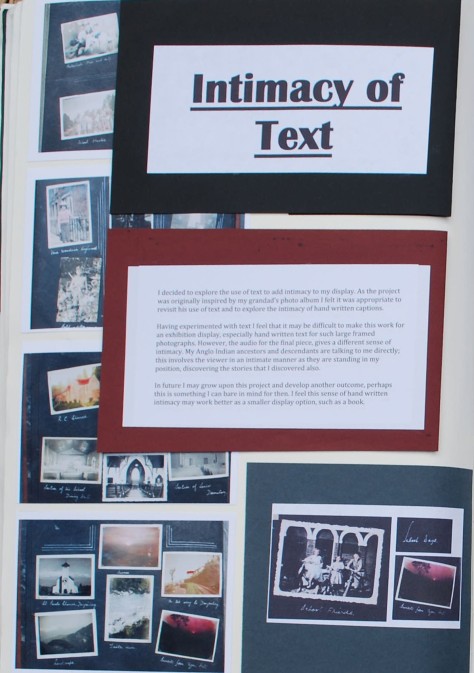Reflective Report
During this module I have improved my capabilities to investigate and build upon my ideas through contextual readings, analysis and interpretation of material. This allowed me to show my understanding through my photography and writing (LO2/3). I examined the topic of Diaspora and family memories; as these were key for the progression of my chosen area of practice. Allan Sekula’s ‘Polonia and Other Fables’ made me more aware of how such a broad topic as diaspora, can be presented as a project or exhibition. Stuart Hall’s ‘Cultural Identity and Diaspora’ prepared me to explore the stories of Anglo Indians who are alive and well, despite the diaspora, this progressed to capturing memories for posterity and celebration. In Jayani Jeanne Bonnerjee’s thesis, ‘Neighbourhood, City, Diaspora’, she decided to “use personal memorabilia as material objects of memory to explore diasporic links” (Bonnerjee, 2010:59). I also found that personal stories from my own family, held a stronger narrative, than the information I was gaining from the Anglo Indian Association and other articles, so I focused on these. The fundamental discussions that I researched aided my critical reflection, and allowed me to contextualise, and show my understanding of my chosen specialism; this is evidenced in my development and experimentation.
(LO3)I approached the topic of Anglo Indian diaspora as a descendant of those who experienced India’s independence, not as an outsider, it is a case of ‘we’ not ‘they’. This is evidenced in my proposal, critical reflections, and critical rationale. Although this culture is my heritage, I am aware much of it has been hidden from me until now. To help me avoid the mistake of approaching the topic as an outsider I read a summary of Abigail Solomon Godeau’s ‘Inside/Out’, to gain a further understanding on how photographers approach from an inside or outside view. For this reason I was careful to avoid exploiting my Anglo Indian family members; allowing them to speak about their experiences freely on the audio, and asking them to show me objects they felt reveal our Anglo Indian cultural history.
I approached the project with a professional attitude; my dedication ensured the development and growth of the project, this is shown in the progressive stages in my sketchbook and on my blog (LO4). At the beginning of the module I produced a proposal, which shaped the development of my project plan, this helped me to keep on track during the progression of the project. Throughout my project I came up against differing issues, such as background noise during audio recording sessions; I dealt with this by thinking carefully about the environment I recorded in. I have produced portraiture and audio before, I therefore learnt from past projects, developing an extension of my existing approaches.
For this body of work I had to be self critical throughout. Through experimentation and reflection on tasks, the project developed from a general idea to a clear conceptual exhibition piece comprising of photographic prints and an audio piece. Emily Jacir’s “Material for Film” in which she assembles different media type materials inspired me. I also looked at Melanie Manchot’s “Moscow Girls”, this helped me to envisage how sound and photography could be combined. These contemporary practitioners aided the projects development. I also looked at Esther Teichmann’s work and Maria Kapajeva’s “Marry Me” to contextualise historical processes, such as tinting, used in contemporary works. Curtis Mann’s “After the Dust, Second View (Beirut)” motivated me to explore bleaching processes. My still life layouts were inspired by my research on the book “Stilled”, Sara Cwnar’s Colour Studies” and Dan Bannino’s “Still-Diets”. Whilst Researching display ideas I studied Zanele Muholi’s recent exhibitions, her use of pins and frames were considered and influenced my own exhibition piece. My research of photographers, artists and writers enabled me to create my own body of work that is contextually grounded and inspired by contemporary practitioners.
I have acknowledged the key concerns involved in producing perceptions that professionally and efficiently communicate a specific message to a particular audience (LO5). My work examines culture and history of Anglo Indian diaspora, addressing lost and fragmented memories. Through my family memories I have created an exhibition piece which will not only reach out to other Anglo Indian descendants, but also make others aware of the uniqueness of our Anglo Indian heritage.
This self determined project shows my dedication and photographic skills to the best of my abilities (LO6). My sketchbook is evidence of my extended body of work, demonstrating the development of the project from digital photographs and moving image, audio, montage and experimental layering techniques. My exhibition piece includes 6 fibre-based prints framed and displayed as a celebration of culture, a lost heritage rediscovered. The audio I have produced gives the work context, by including a history of my Anglo Indian origins together with narration and music by my Anglo Indian family members.
My project is about the fading memories of my Anglo Indian heritage. Sadly, during my project a participating relative passed away, this highlights the importance of recording these memories now. If I had not recorded her memories, they may have been lost forever. I wish to hold on to these memories and to celebrate my ancestral culture.
References
Bonnerjee, J. (2010) Identity And Belonging For Calcutta’s n And Chinese Communities. Ph.D
La Grange, A. (2005) Basic Critical Theory For Photographers. Oxford: Elsevier Focal Press






